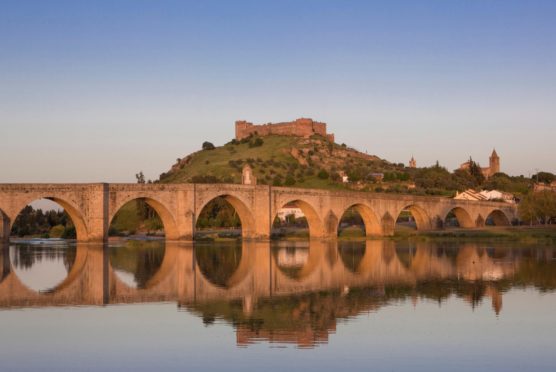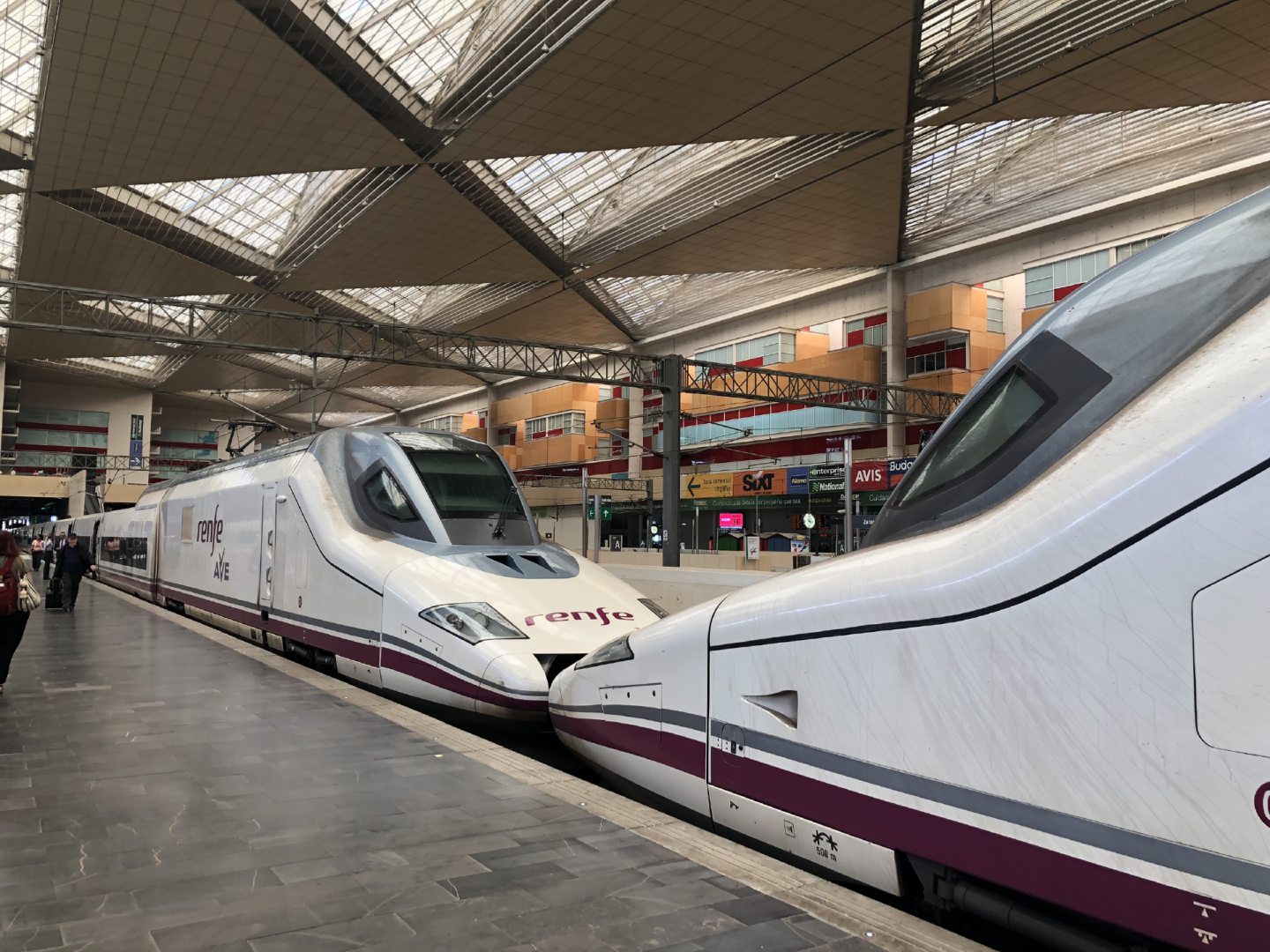
Rattling along a remote track towards Valencia, a blood-orange sunrise bathed the carriage as we crossed a towering viaduct above a ravine.
Down below, the shadow of the carriages flickered across an olive grove and a deer darted by a winding river. A cheery conductor checked our tickets – just a handful of us on board – as we passed a speed limit sign: 20 kilometres an hour maximum (12 miles an hour) across the viaduct.
Welcome to Spain.
Some 18 million of us head here each year – when a pandemic doesn’t stand in our way – but what do we know of the country beyond its Costas, islands and main cities?
One enjoyable way to find out, once we’re able to travel properly again, is to take to its branch lines – shunning the sleek, new bullet trains – and settle in for a slow rail adventure.
That is what I did back in the summer of 2019, before any of us had even heard of Covid, spending a month travelling 3,000 miles on 52 rides, while researching my new travel book Slow Trains Around Spain.
Starting in Figueres, Salvador Dali’s hometown in the north-east, having travelled by Eurostar from London’s St Pancras and then French SNCF trains from Paris, the tracks led south beyond Barcelona, cut across Catalonia to Aragon and the north coast, before continuing on charming narrow-gauge trains towards Santiago de Compostela. From there, the lines span south to Madrid, west to Extremadura, east to Valencia and south via Granada to Seville. Across parched plains, along rugged coastlines, in and out of sleepy towns, and between soaring mountains the trains went, revealing a side of Spain far removed from tourist hotspots.
All was easy to arrange. Simply log on to the app of Renfe (Red Nacional de los Ferrocarriles Espanoles), which runs Spain’s railways, or buy tickets at stations. Booking places to stay on the internet was a doddle, too.
Here are my favourite stop-offs.
Locomotive heaven
South-west of Barcelona, Vilanova i la Geltru is a peaceful seaside town with a beach, ancient labyrinthine lanes, a fine cathedral and the excellent Catalonia Railway Museum.
Aragon adventure
In the province of Aragon, Huesca is a little city overlooked by a hillside with Spanish Civil War trenches reached via hiking trails. Writer George Orwell served for the Republicans here in 1937 and survived a gunshot wound. Climb the cathedral tower for splendid views.
Galician glory
Ferrol is a naval base renowned for its striking buildings with conservatory-style windows called “galleria” – created by shipbuilders, so seamen had better vision during storms. Ferrol is quiet, with café-lined squares and is General Franco’s hometown.
Hot stuff
Close to Portugal in the province of Extremadura, Badajoz is a peaceful spot with a Moorish fortress facing the River Guadiana and its 15th-Century Puente de Palmas bridge. The temperature soars in summer, regularly touching 40C. Don’t miss the great municipal art gallery.
Matadors and mines
The twin attractions of Almaden, a tiny town in Castile-La Mancha, are its old bullring and ancient aluminum mine. The latter is 2,000 years old and closed in 2003. Now it is a United Nations-recognised historical site and underground tours include mine trains rides.
Feeling arty
Also in Castile-La Mancha, Cuenca is a small city with a clifftop old quarter enjoying sweeping mountain views. The highlight is a row of houses that hangs over a cliff’s edge, now an abstract art museum.
Beach dream
Forget the Costa Blanca and Costa del Sol. Instead, stop-off at Aguilas in Costa Calida in the province of Murcia. The sand by the harbour beneath the city fort is wonderfully peaceful. Check out the small mining railway museum and old railway pier.
P.S.
The small city of Alcoy, north of Alicante, is where Spain’s industrial revolution took place. In 1873 a Petroleum Uprising was held over working conditions (so called as strikers bore fuel-soaked torches). Museums explain it all. Now it is a quiet, pretty backwater.

Enjoy the convenience of having The Sunday Post delivered as a digital ePaper straight to your smartphone, tablet or computer.
Subscribe for only £5.49 a month and enjoy all the benefits of the printed paper as a digital replica.
Subscribe © Press Association Images
© Press Association Images